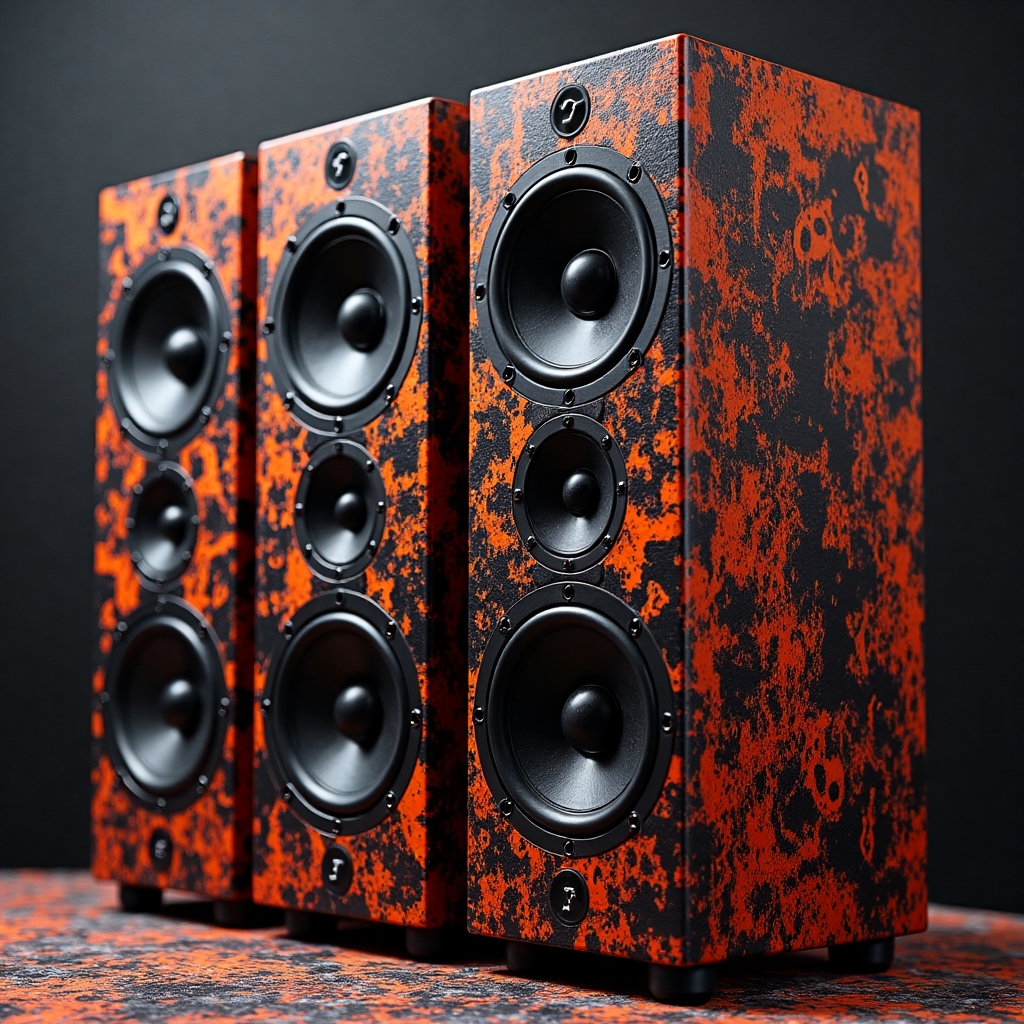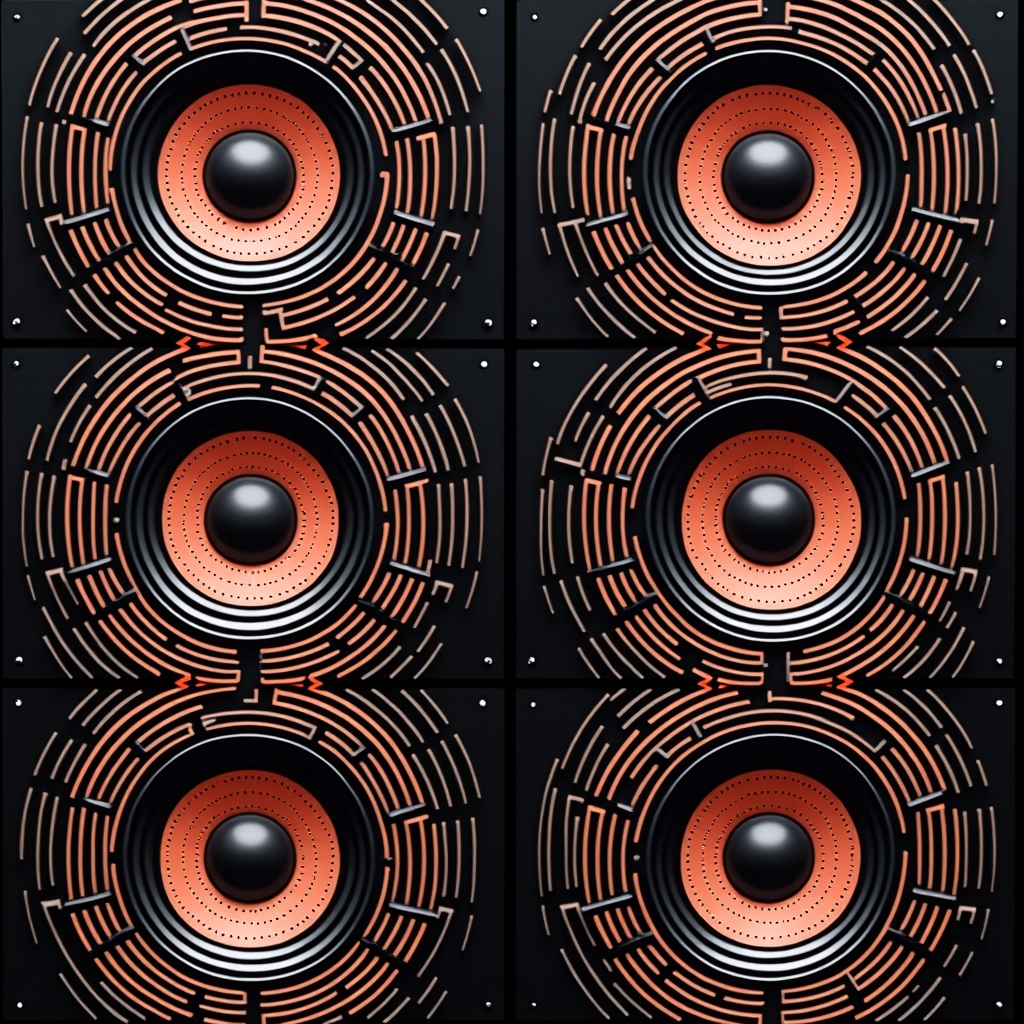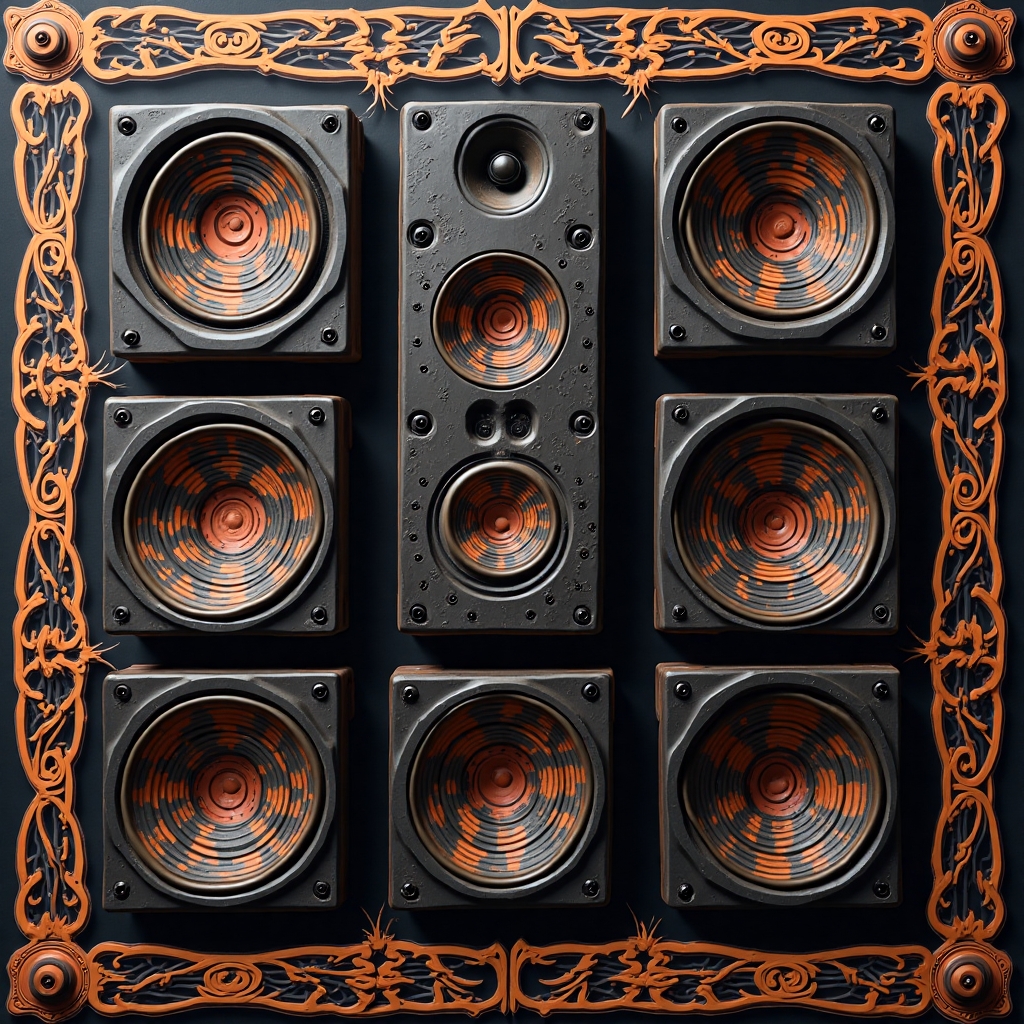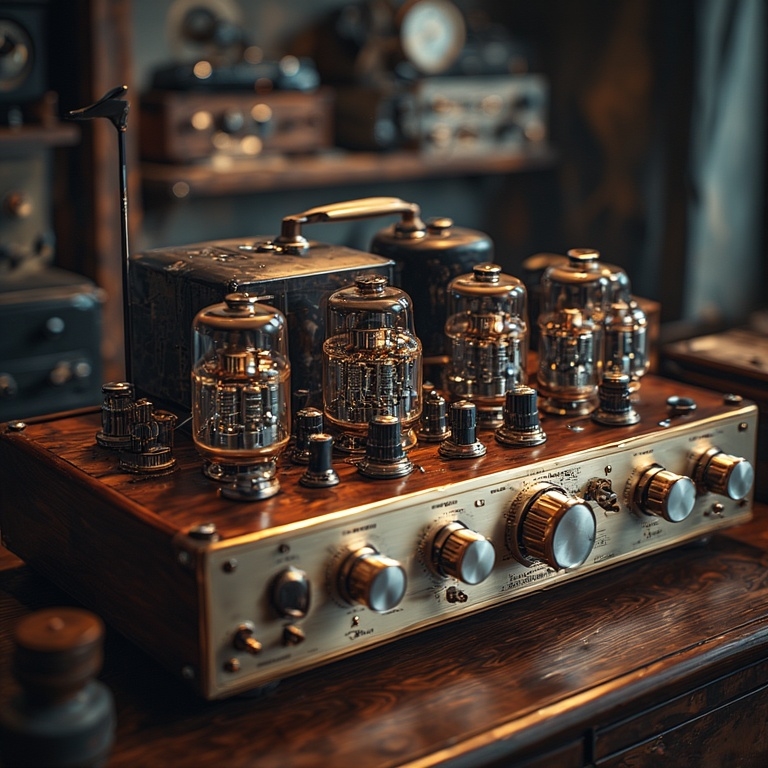4 Ohm And 8 Ohm Speakers
WHY IMPEDANCE MATTERS IN AUDIO
Speakers are defined by their impedance, which is measured in ohms and represents resistance to electrical current. A 4 ohm speaker places a heavier demand on an amplifier, requiring more current to achieve the same loudness. An 8 ohm speaker is easier to drive, making it more compatible with consumer-grade amplifiers. The difference between these two values influences power handling, sound quality, and system durability. Understanding impedance is essential for anyone building or upgrading an audio system.
The choice between 4 ohm and 8 ohm designs depends on amplifier strength, listening environment, and desired performance. Both types can deliver excellent sound when properly matched. This exploration alternates between narrative, tables, and point lists for clarity. The goal is to provide a comprehensive, fact-based comparison that is entirely original.

IMPEDANCE FUNDAMENTALS – ELECTRICAL RESISTANCE IN PRACTICE
Impedance is not a fixed value but varies with frequency, meaning speakers present different loads across the audio spectrum. A 4 ohm speaker generally allows more current to pass, which can increase loudness but also strain amplifiers. An 8 ohm speaker resists current more, reducing stress on amplifiers and improving compatibility. Lower impedance designs are common in professional audio systems where amplifiers are built to handle heavy loads. Higher impedance designs dominate home audio because they are safer for consumer electronics. The difference is not about quality but about electrical demand.
Amplifiers specify safe impedance ranges to prevent overheating or distortion. Matching impedance ensures efficiency and longevity. Without proper pairing, both speakers and amplifiers risk damage. Impedance is therefore the foundation of audio system design.
| Impedance Value | Current Demand | Amplifier Stress | Loudness Potential | Common Usage |
|---|---|---|---|---|
| 4 Ohm | High | Greater | Higher | Professional |
| 8 Ohm | Moderate | Lower | Moderate | Home Audio |
AMPLIFIER COMPATIBILITY – MATCHING FOR STABILITY
Amplifiers are engineered with specific impedance ranges, and exceeding those limits can cause serious problems. A 4 ohm speaker requires an amplifier capable of delivering high current without distortion. An 8 ohm speaker works with most consumer amplifiers, making it more versatile. Professional amplifiers often list 2 ohm, 4 ohm, and 8 ohm ratings, while consumer models usually specify 6 to 8 ohms.
Using a 4 ohm speaker with a weak amplifier can lead to overheating and shutdown. Using an 8 ohm speaker with a strong amplifier may limit maximum loudness but ensures safety. Compatibility is about balance between demand and supply. Proper matching avoids wasted energy and protects equipment. Amplifier manuals always specify recommended impedance ranges. Following these guidelines ensures stable, reliable performance.
- 4 ohm speakers require high-current amplifiers.
- 8 ohm speakers are broadly compatible.
- Mismatched impedance risks amplifier damage.
- Professional systems often prefer 4 ohm setups.
- Home audio commonly uses 8 ohm designs.
- Amplifier manuals specify safe ranges.
- Overloading shortens equipment lifespan.
- Correct pairing maximizes clarity.
- Stability depends on proper matching.
- Efficiency improves with compatibility.
POWER DEMANDS – ENERGY CONSUMPTION DIFFERENCES
A 4 ohm speaker draws more current, meaning amplifiers must work harder to maintain volume. This increases heat output and energy consumption. An 8 ohm speaker requires less current, making it more efficient for everyday listening. The difference is most noticeable at high volumes, where 4 ohm speakers can push amplifiers to their limits. Professional systems accept this trade-off for greater loudness. Home systems benefit from the efficiency of 8 ohm designs. Power demand directly affects electricity usage and equipment wear. Amplifiers rated for 4 ohm loads are built with stronger power supplies. Amplifiers designed for 8 ohm loads are more economical and compact. Choosing the right speaker depends on balancing performance with efficiency.
| Speaker Type | Power Requirement | Heat Output | Efficiency | Best Application |
|---|---|---|---|---|
| 4 Ohm | High | Greater | Lower | Professional |
| 8 Ohm | Moderate | Lower | Higher | Home Audio |
SOUND QUALITY – PERCEIVED LISTENING DIFFERENCES
Impedance itself does not determine sound quality, but amplifier performance under load does. A properly matched 4 ohm system can deliver dynamic, powerful sound with strong bass response. An 8 ohm system provides balanced, consistent audio with less risk of distortion. The difference is often subtle and depends on amplifier strength. Loudness is easier to achieve with 4 ohm speakers, but clarity is more consistent with 8 ohm speakers. Distortion occurs when amplifiers cannot handle the load, regardless of impedance. Professional listeners may prefer 4 ohm setups for their energy and impact. Quality depends on synergy between amplifier and speaker. Listening environment also influences perception of differences.
- Impedance affects amplifier behavior.
- 4 ohm setups can sound more dynamic.
- 8 ohm setups emphasize stability.
- Distortion occurs with mismatched loads.
- Loudness is easier with 4 ohm speakers.
- Clarity is consistent with 8 ohm speakers.
- Professional listeners may prefer 4 ohm.
- Casual users benefit from 8 ohm.
- Quality depends on system synergy.
- Environment influences perception.
DURABILITY – LONG-TERM SYSTEM RELIABILITY
Durability depends on how well speakers and amplifiers are paired. A 4 ohm speaker can wear amplifiers faster if they are not designed for heavy loads. An 8 ohm speaker generally lasts longer in consumer setups due to reduced strain. Heat is the main factor that shortens amplifier lifespan. Proper ventilation and matching impedance reduce this risk. Professional systems accept shorter lifespans because they prioritize performance. Consumer systems prioritize longevity and safety. Maintenance is more frequent with 4 ohm setups. Maintenance is less demanding with 8 ohm setups. Choosing impedance is therefore also about long-term reliability.
| Factor | 4 Ohm Speakers | 8 Ohm Speakers |
|---|---|---|
| Amplifier Wear | Higher | Lower |
| Heat Impact | Greater | Moderate |
| Lifespan | Shorter if mismatched | Longer with compatibility |
| Maintenance | Frequent | Less frequent |
HEAT MANAGEMENT – THERMAL IMPACT ON AMPLIFIERS
Amplifiers generate heat when driving speakers, and impedance plays a major role in this process. A 4 ohm speaker forces the amplifier to deliver more current, which increases thermal buildup. This can shorten component lifespan if cooling systems are inadequate. An 8 ohm speaker reduces current demand, keeping amplifiers cooler during extended use. Heat management is critical for professional systems that run at high volumes for long periods. Consumer systems benefit from the reduced stress of 8 ohm designs. Proper ventilation and cooling fans are essential for 4 ohm setups. Passive cooling is usually sufficient for 8 ohm setups. Thermal efficiency directly influences reliability and performance. Choosing impedance is therefore also about managing heat effectively.
| Impedance | Current Demand | Heat Output | Cooling Requirement | Reliability |
|---|---|---|---|---|
| 4 Ohm | High | Greater | Active Cooling | Moderate |
| 8 Ohm | Moderate | Lower | Passive Cooling | Higher |
EFFICIENCY – ENERGY CONVERSION AND PERFORMANCE
Efficiency measures how well electrical energy is converted into sound. A 4 ohm speaker consumes more current, which can reduce efficiency if the amplifier is not designed for heavy loads. An 8 ohm speaker uses less current, making it more efficient in typical home environments. Efficiency is not only about energy but also about clarity, since amplifiers under stress may distort sound.
Professional systems often accept lower efficiency for higher loudness. Consumer systems prioritize efficiency to reduce electricity costs and equipment wear. The balance between efficiency and performance depends on usage goals. Amplifiers designed for 4 ohm loads are built with stronger power supplies. Amplifiers designed for 8 ohm loads are more economical and compact. Efficiency is therefore a key factor in choosing impedance.
- Efficiency measures energy-to-sound conversion.
- 4 ohm speakers consume more current.
- 8 ohm speakers are more efficient.
- Amplifier stress reduces clarity.
- Professional systems accept lower efficiency.
- Consumer systems prioritize efficiency.
- Balance depends on usage goals.
- Stronger power supplies suit 4 ohm loads.
- Compact designs suit 8 ohm loads.
- Efficiency influences long-term performance.
LOUDNESS POTENTIAL – MAXIMUM OUTPUT CAPABILITY
Loudness potential is often higher with 4 ohm speakers because they draw more current from the amplifier. This allows them to produce stronger bass and higher overall volume. However, the amplifier must be capable of handling the demand without distortion. An 8 ohm speaker produces moderate loudness but maintains stability across different amplifiers. Professional environments often require the extra loudness of 4 ohm designs. Home environments benefit from the balanced output of 8 ohm designs. Loudness is not only about volume but also about clarity at high levels. Distortion occurs when amplifiers are pushed beyond their limits. Proper pairing ensures loudness without sacrificing quality. Loudness potential is therefore a trade-off between demand and stability.
| Speaker Type | Loudness Potential | Bass Strength | Distortion Risk | Best Environment |
|---|---|---|---|---|
| 4 Ohm | Higher | Stronger | Greater | Professional |
| 8 Ohm | Moderate | Balanced | Lower | Home Audio |
COMPATIBILITY RANGE – FLEXIBILITY ACROSS SYSTEMS
Compatibility refers to how easily a speaker can be paired with different amplifiers. A 4 ohm speaker requires amplifiers built for high current, limiting flexibility. An 8 ohm speaker works with most consumer amplifiers, making it more versatile. Professional amplifiers often list multiple impedance ratings to accommodate different speakers. Consumer amplifiers usually specify 6 to 8 ohms, favoring 8 ohm designs. Compatibility ensures safe operation and prevents damage. A mismatched system risks overheating or distortion. Flexibility is important for users who upgrade or change equipment frequently. Stability is important for users who want long-term reliability. Compatibility range is therefore a major factor in choosing impedance.
- 4 ohm speakers limit compatibility.
- 8 ohm speakers are broadly flexible.
- Professional amplifiers support multiple ratings.
- Consumer amplifiers favor 8 ohm designs.
- Compatibility ensures safe operation.
- Mismatched systems risk damage.
- Flexibility suits frequent upgrades.
- Stability suits long-term use.
- Compatibility range influences choice.
- Impedance defines system pairing.
SYSTEM DURABILITY – IMPACT ON LONGEVITY
System durability depends on how well amplifiers and speakers are matched. A 4 ohm speaker can shorten amplifier lifespan if the system is not designed for heavy loads. An 8 ohm speaker generally extends amplifier lifespan by reducing strain. Heat is the main factor that affects durability. Proper cooling and impedance matching reduce this risk. Professional systems accept shorter lifespans for higher performance. Consumer systems prioritize longevity and safety. Maintenance is more frequent with 4 ohm setups. Maintenance is less demanding with 8 ohm setups. Durability is therefore a balance between performance and reliability.
| Factor | 4 Ohm Speakers | 8 Ohm Speakers |
|---|---|---|
| Amplifier Wear | Higher | Lower |
| Heat Impact | Greater | Moderate |
| Lifespan | Shorter if mismatched | Longer with compatibility |
| Maintenance | Frequent | Less frequent |
COST FACTORS – PRICE DIFFERENCES IN SPEAKER DESIGN
Cost is often influenced by the complexity of design and the intended market. A 4 ohm speaker may be more expensive because it requires stronger materials and engineering to handle higher current. An 8 ohm speaker is generally more affordable, as it is designed for mass consumer use. Professional-grade 4 ohm speakers are priced higher due to durability and performance. Consumer-grade 8 ohm speakers are priced lower to appeal to everyday users. Cost also depends on brand reputation and added features. Amplifiers designed for 4 ohm loads are usually more expensive. Amplifiers designed for 8 ohm loads are more economical. Buyers must balance cost with performance needs. Price is therefore a practical consideration in choosing impedance.
| Speaker Type | Typical Cost | Market Focus | Amplifier Cost | Value Proposition |
|---|---|---|---|---|
| 4 Ohm | Higher | Professional | Higher | Performance |
| 8 Ohm | Lower | Consumer | Lower | Accessibility |

INSTALLATION – PRACTICAL SETUP CONSIDERATIONS
Installation depends on amplifier compatibility and wiring requirements. A 4 ohm speaker requires thicker wiring to handle higher current safely. An 8 ohm speaker can use standard wiring without risk of overheating. Professional installations often include cooling systems for 4 ohm setups. Consumer installations are simpler with 8 ohm designs. Wiring length also affects impedance performance. Longer cables increase resistance, which can affect 4 ohm speakers more severely. Shorter cables reduce this issue, making installation easier. Proper installation ensures safety and performance. Installation choices therefore depend on impedance and environment.
- 4 ohm speakers require thicker wiring.
- 8 ohm speakers use standard wiring.
- Professional setups include cooling systems.
- Consumer setups are simpler.
- Cable length affects impedance.
- Longer cables increase resistance.
- Shorter cables reduce issues.
- Proper installation ensures safety.
- Performance depends on setup quality.
- Environment influences installation needs.
PERFORMANCE IN PROFESSIONAL AUDIO – HIGH DEMAND SYSTEMS
Professional audio systems often rely on 4 ohm speakers for maximum loudness and dynamic range. These setups are used in concerts, theaters, and large venues. Amplifiers in these environments are built to handle heavy loads. The extra current demand is acceptable because performance is prioritized over efficiency. 8 ohm speakers are less common in professional systems but may be used for monitoring. Loudness and clarity are critical in professional environments. Durability is managed through regular maintenance and cooling systems. 4 ohm designs dominate because they deliver impact and energy. Compatibility is ensured by specialized amplifiers. Professional audio therefore favors 4 ohm speakers for performance.
| Environment | Preferred Impedance | Reason For Choice | Amplifier Type | Maintenance Needs |
|---|---|---|---|---|
| Concerts | 4 Ohm | Loudness | High Current | Frequent |
| Home Studios | 8 Ohm | Compatibility | Consumer Grade | Moderate |
PERFORMANCE IN HOME AUDIO – EVERYDAY LISTENING
Home audio systems usually rely on 8 ohm speakers for compatibility and efficiency. These setups are used in living rooms, bedrooms, and small entertainment spaces. Amplifiers in these environments are designed for moderate loads. The reduced current demand ensures safety and longevity. 4 ohm speakers are less common in home audio but may be used in high-end systems. Loudness is less critical in home environments compared to clarity and stability. Durability is prioritized because users expect long-term reliability. 8 ohm designs dominate because they are safe and versatile. Compatibility is ensured by consumer-grade amplifiers. Home audio therefore favors 8 ohm speakers for practicality.
- Home audio favors 8 ohm designs.
- Consumer amplifiers are built for 8 ohm loads.
- 4 ohm speakers are rare in home setups.
- Loudness is less critical at home.
- Clarity and stability are prioritized.
- Durability is important for long-term use.
- 8 ohm designs are safe and versatile.
- Compatibility is broad with consumer systems.
- Efficiency reduces electricity costs.
- Home audio emphasizes practicality.
WIRING IMPACT – CABLE RESISTANCE AND PERFORMANCE
Wiring plays a significant role in speaker performance. A 4 ohm speaker is more sensitive to cable resistance because it already demands high current. Longer cables can reduce efficiency and increase distortion. An 8 ohm speaker is less affected by cable resistance, making installation easier. Professional systems often use short, thick cables for 4 ohm setups. Consumer systems can use standard cables for 8 ohm setups. Cable quality also influences performance, especially at high volumes. Proper wiring ensures safety and clarity. Incorrect wiring can damage amplifiers and speakers. Wiring impact is therefore greater for 4 ohm systems.
| Factor | 4 Ohm Speakers | 8 Ohm Speakers |
|---|---|---|
| Cable Sensitivity | Higher | Lower |
| Resistance Impact | Greater | Moderate |
| Installation Needs | Specialized | Standard |
| Risk Of Distortion | Higher | Lower |
FREQUENCY RESPONSE – HOW IMPEDANCE AFFECTS SOUND RANGE
Frequency response describes how accurately a speaker reproduces different tones across the audio spectrum. A 4 ohm speaker can deliver strong bass and dynamic highs when paired with a powerful amplifier. An 8 ohm speaker provides a smoother, more balanced response across frequencies. The difference is not in the design of the drivers but in how the amplifier interacts with the load.
Lower impedance allows more current flow, which can emphasize certain ranges. Higher impedance stabilizes the response, reducing distortion at mid and high frequencies. Professional systems often exploit 4 ohm designs for impactful bass. Consumer systems rely on 8 ohm designs for balanced listening. Frequency response is shaped by synergy between amplifier and speaker. Impedance therefore influences tonal accuracy and stability.
| Impedance | Bass Response | Midrange Stability | High Frequency Clarity | Best Use Case |
|---|---|---|---|---|
| 4 Ohm | Stronger | Variable | Dynamic | Professional |
| 8 Ohm | Balanced | Stable | Clear | Home Audio |
RELIABILITY UNDER STRESS – PERFORMANCE AT HIGH VOLUMES
Reliability under stress refers to how well a system performs at maximum output. A 4 ohm speaker can push amplifiers to their limits, demanding high current. This increases the risk of overheating and distortion if the amplifier is not designed for heavy loads. An 8 ohm speaker maintains stability even at high volumes, reducing strain on equipment. Professional systems accept the risks of 4 ohm designs for greater loudness. Consumer systems benefit from the reliability of 8 ohm designs.
Reliability depends on amplifier quality, cooling, and impedance matching. Stress testing is common in professional environments to ensure durability. Home environments rarely push systems to maximum output. Reliability under stress is therefore a key difference between 4 ohm and 8 ohm speakers.
- 4 ohm speakers demand high current.
- 8 ohm speakers reduce strain.
- Overheating risks increase with 4 ohm loads.
- Stability improves with 8 ohm loads.
- Professional systems accept higher risks.
- Consumer systems prioritize reliability.
- Amplifier quality influences performance.
- Cooling systems reduce stress.
- Stress testing ensures durability.
- Reliability depends on impedance matching.
TECHNOLOGICAL ADVANCEMENTS – MODERN DESIGN IMPACTS
Modern speaker technology has improved how impedance is managed. Advanced materials allow 4 ohm speakers to handle higher currents more safely. Improved amplifier designs reduce distortion even under heavy loads. 8 ohm speakers benefit from efficiency-focused engineering for consumer use. Digital signal processing helps balance impedance effects across frequencies. Smart amplifiers automatically adjust to different loads. Wireless systems often favor 8 ohm designs for compatibility. Professional systems integrate cooling and monitoring for 4 ohm setups. Consumer systems integrate compact designs for 8 ohm setups. Technology continues to reduce the gap between 4 ohm and 8 ohm performance. Advancements make impedance management more reliable than ever before.
| Advancement | Impact On 4 Ohm Speakers | Impact On 8 Ohm Speakers |
|---|---|---|
| Materials | Higher current tolerance | Improved efficiency |
| Amplifier Design | Reduced distortion | Compact compatibility |
| Digital Processing | Balanced frequencies | Enhanced clarity |
| Smart Systems | Automatic load handling | Broader flexibility |
FINAL COMPARISON – CHOOSING BETWEEN 4 OHM AND 8 OHM
The choice between 4 ohm and 8 ohm speakers depends on goals and environment. A 4 ohm speaker suits professional systems where loudness and impact are critical. An 8 ohm speaker suits consumer systems where efficiency and compatibility matter most. Both designs can deliver excellent sound when properly matched with amplifiers. Loudness potential favors 4 ohm designs, while stability favors 8 ohm designs. Durability is easier to maintain with 8 ohm systems. Professional environments accept the risks of 4 ohm setups. Home environments benefit from the safety of 8 ohm setups. Impedance is not about quality but about electrical demand. The final choice depends on balancing performance, efficiency, and reliability.
- 4 ohm suits professional loudness needs.
- 8 ohm suits consumer efficiency needs.
- Loudness favors 4 ohm designs.
- Stability favors 8 ohm designs.
- Durability is easier with 8 ohm setups.
- Professional systems accept higher risks.
- Home systems prioritize safety.
- Impedance defines electrical demand.
- Quality depends on amplifier pairing.
- Choice depends on user goals.
EXTREME LOW IMPEDANCE – 2 OHM SPEAKERS
A 2 ohm speaker represents one of the lowest impedance values commonly available. These speakers demand extremely high current from amplifiers, which can quickly expose weaknesses in power supply design. Professional car audio systems often use 2 ohm speakers to maximize loudness in compact spaces. The trade-off is that amplifiers must be specifically engineered to handle such heavy loads. Heat buildup is significant, requiring advanced cooling systems. Efficiency is reduced because more energy is consumed to maintain volume. Distortion risk increases if amplifiers are not matched correctly. Durability can be compromised without proper system design. 2 ohm speakers are therefore best suited for specialized, high-performance environments. They are rarely used in home audio due to compatibility issues.
| Impedance | Current Demand | Efficiency | Heat Output | Common Usage |
|---|---|---|---|---|
| 2 Ohm | Very High | Low | Very High | Car Audio |
EXTREME HIGH IMPEDANCE – 16 OHM SPEAKERS
A 16 ohm speaker represents one of the highest impedance values found in audio systems. These speakers demand very little current, making them easy on amplifiers. The trade-off is reduced loudness potential compared to lower impedance designs. Vintage audio systems often used 16 ohm speakers because amplifiers of the time were less powerful. Modern systems rarely use them, but they remain popular among enthusiasts seeking classic sound. Efficiency is high because amplifiers are not strained.
Heat output is minimal, extending amplifier lifespan. Compatibility is broad because most amplifiers can handle higher impedance loads. Durability is excellent due to reduced electrical stress. 16 ohm speakers are therefore valued for stability and longevity. They are best suited for vintage or specialty audio setups.
- 16 ohm speakers demand very little current.
- Loudness potential is reduced.
- Vintage systems often used 16 ohm designs.
- Modern systems rarely use them.
- Enthusiasts value classic sound.
- Efficiency is high.
- Heat output is minimal.
- Compatibility is broad.
- Durability is excellent.
- Best suited for specialty setups.

OTHER IMPEDANCE VALUES – 6 OHM AND BEYOND
Beyond 2, 4, 8, and 16 ohm speakers, other values such as 6 ohm exist. A 6 ohm speaker represents a middle ground between 4 ohm and 8 ohm designs. These speakers demand moderate current, offering a balance of loudness and efficiency. Many consumer amplifiers are rated for 6 to 8 ohm loads, making 6 ohm speakers widely compatible. Loudness potential is higher than 8 ohm but lower than 4 ohm. Efficiency is moderate, making them practical for home use. Heat output is manageable, reducing strain on amplifiers. Durability is strong when paired correctly. 6 ohm speakers are often chosen for versatility. They provide a compromise between performance and stability.
| Impedance | Loudness Potential | Efficiency | Heat Output | Compatibility |
|---|---|---|---|---|
| 6 Ohm | Moderate-High | Moderate | Moderate | Broad |
CONCLUSION – MAKING THE RIGHT DECISION
The difference between 4 ohm and 8 ohm speakers is about electrical demand, not inherent sound quality. A 4 ohm speaker is ideal for professional environments where loudness and dynamic range are critical. An 8 ohm speaker is ideal for consumer environments where efficiency, compatibility, and reliability matter most. Both designs can deliver excellent performance when paired with the right amplifier. Understanding impedance ensures safe and effective audio experiences. Proper pairing protects equipment and maximizes clarity. Loudness and stability are trade-offs between the two designs. Long-term reliability favors 8 ohm systems in home use. Professional setups often embrace 4 ohm designs for their impact. The right decision depends on balancing performance with practicality.
JOIN THE DISCUSSION – SHARE YOUR EXPERIENCE
Have you used 4 ohm or 8 ohm speakers in your setup? What differences did you notice in performance, durability, or sound quality?
#AudioEngineering #SpeakerImpedance #SoundQuality #HomeAudio #ProfessionalAudio #TechExplained #MusicSystems #AmplifierMatching #SoundDesign #AudioSetup













Leave a Reply